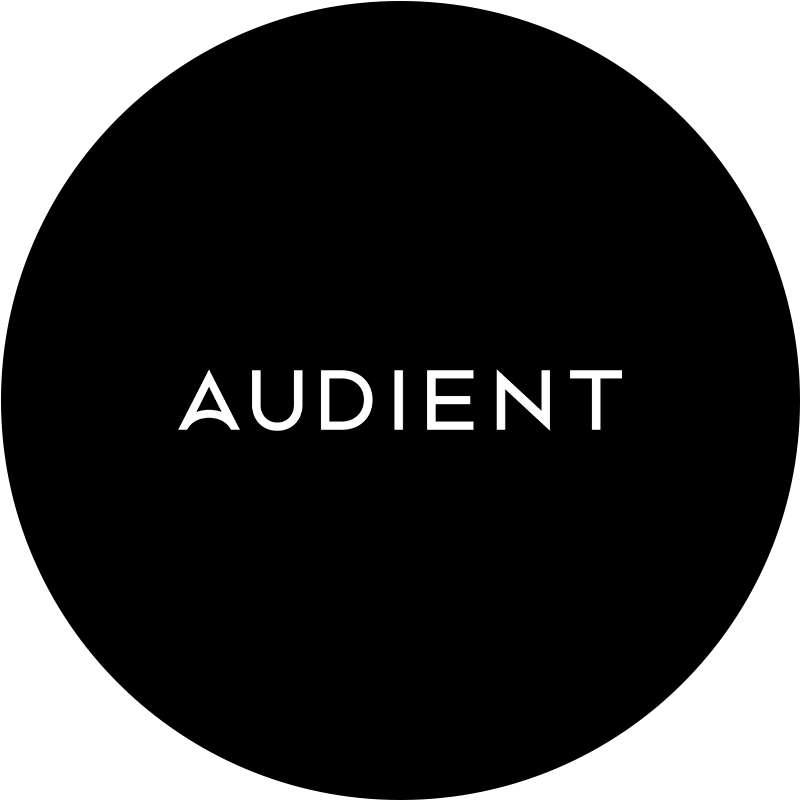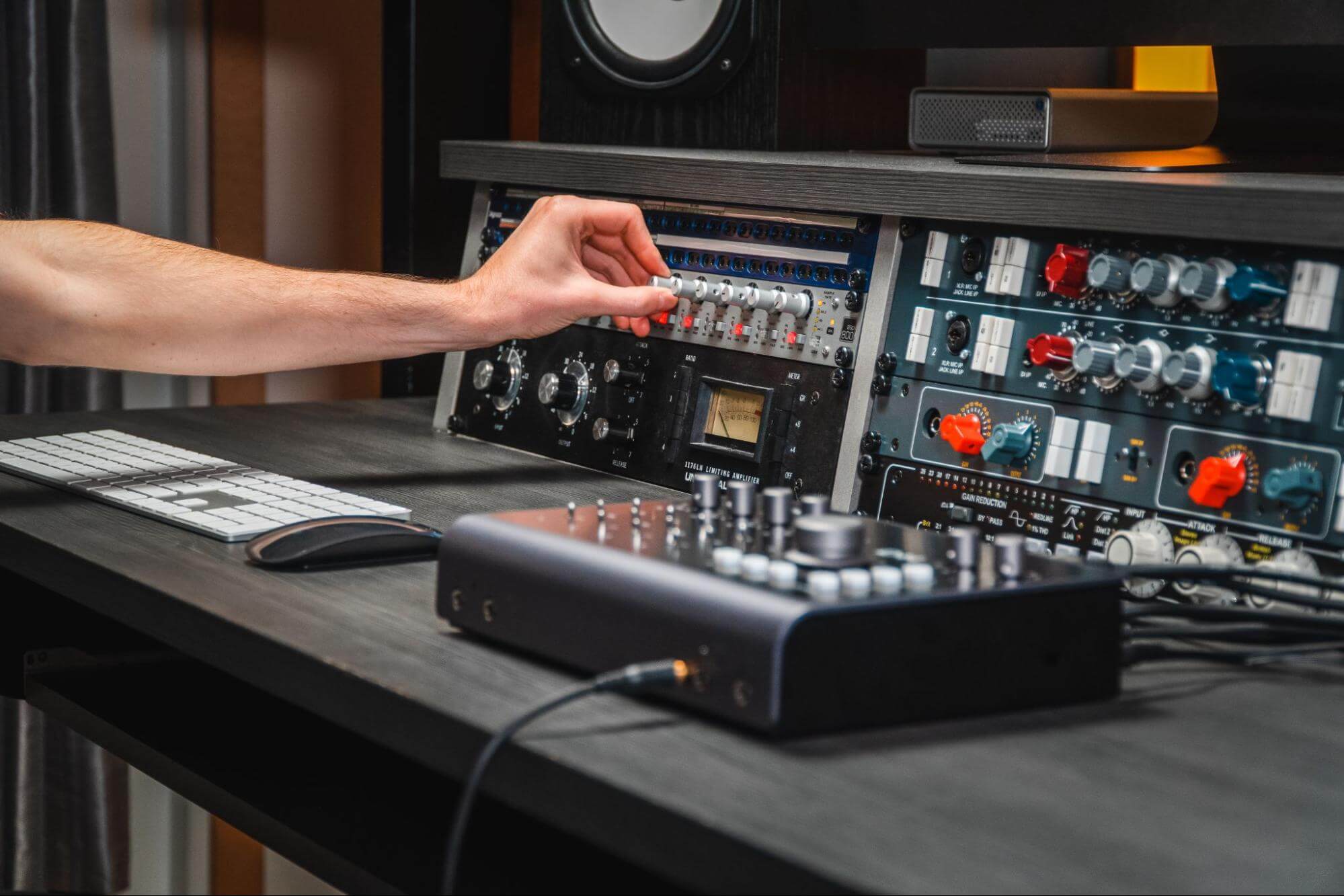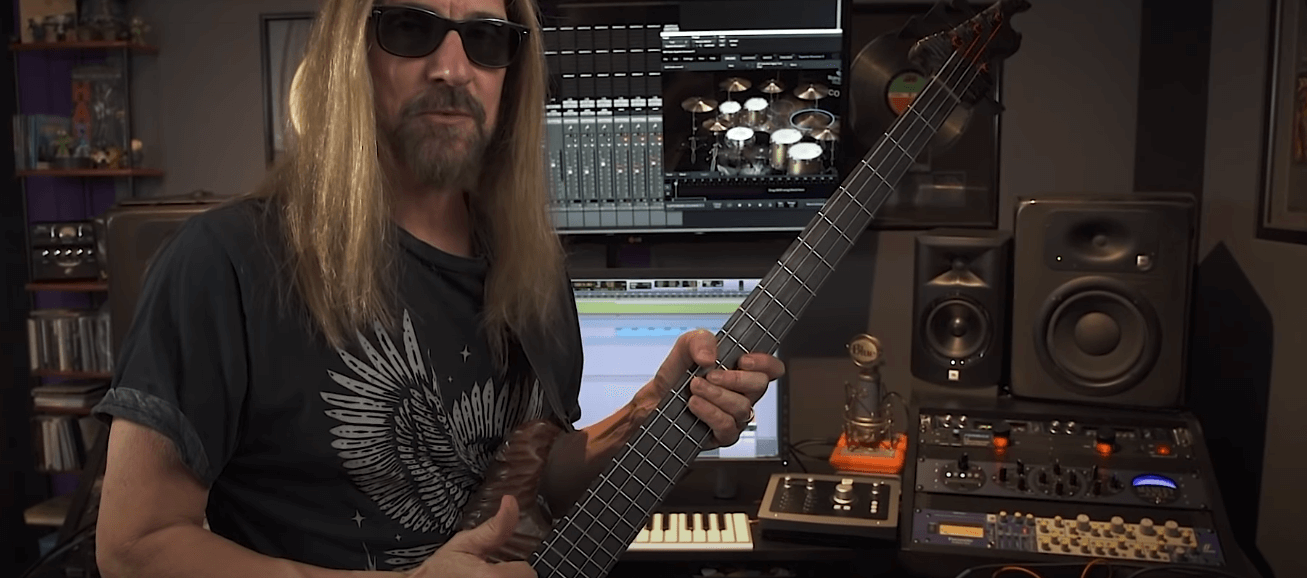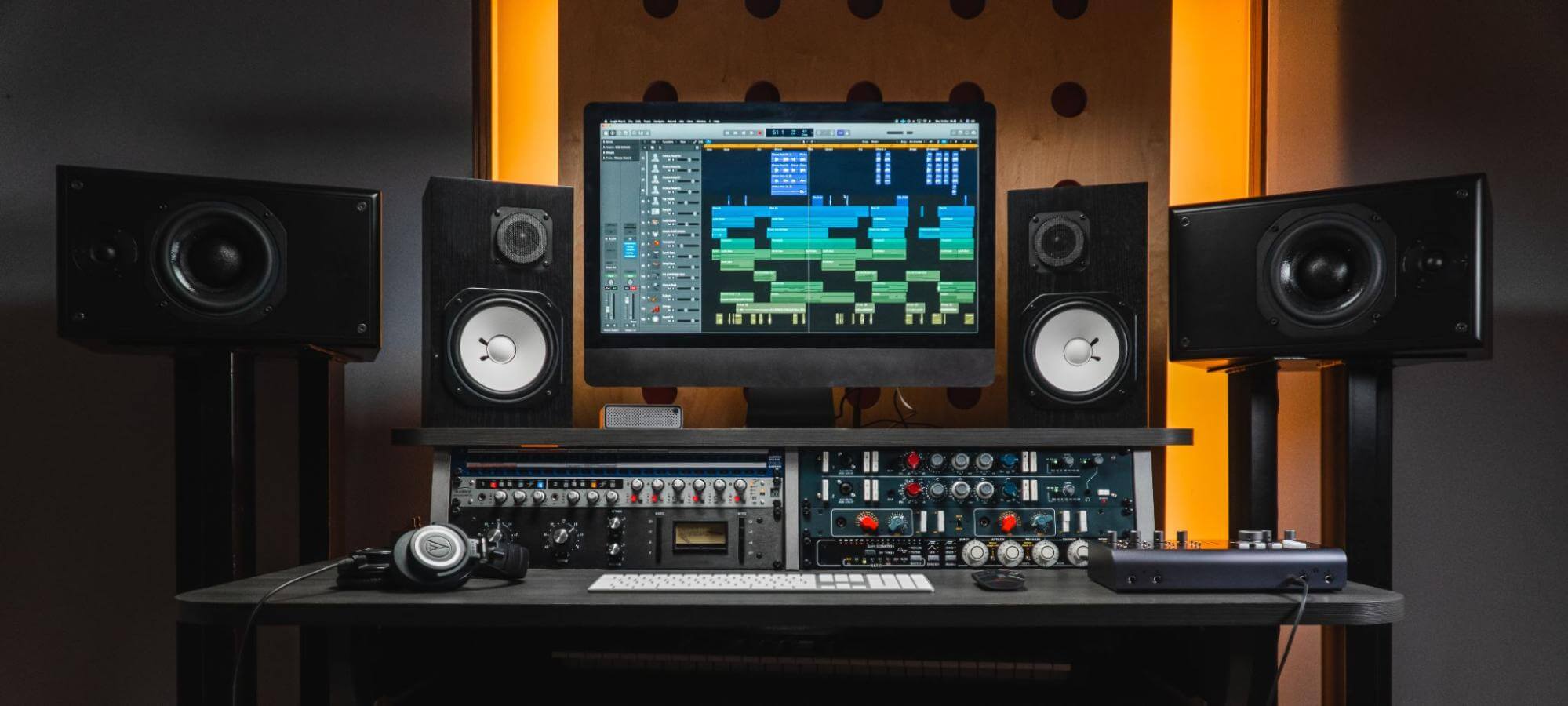The iD44 and iD48 were built with the integration of outboard equipment in mind, most notably in the inclusion of two and eight balanced Insert points respectively, but also with regard to their ADAT expandability. The insert points enable the placement of compressors, EQs and other outboard devices directly into the signal paths on both interfaces’ analogue channels; while the ADAT I/O allows for the addition of up to 16 additional analogue input and output channels, for routing to an external mixer and all the outboard you care to plug into it.
Inserts: craft your perfect recording chain with the ID44
Connecting your outboard to the iD44’s Inserts is easy. Each Insert comprises a balanced Insert Send jack and a balanced Insert Return jack – the first routing the channel’s input signal out of the interface to the input of the first device in your outboard chain; the second accepting the output signal from the last device in your outboard chain back into the interface, before passing it on to your speakers and DAW via the interface’s outputs. You can use balanced or unbalanced cables to make the connections, but as each send and return is mono, if the first and/or last device in your outboard chain is stereo (a reverb or delay, say), you’ll need to use both Inserts to maintain the image.
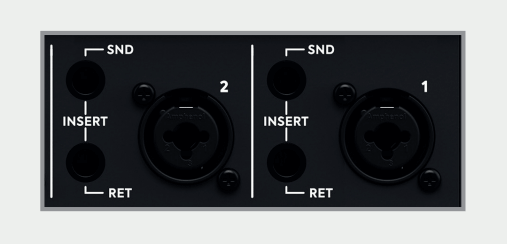
And that’s all there is to it! With your Insert Send connected to the input of the first outboard device in the chain, and the Insert Return plugged into the output of the last, you can sing or play through your outboard with no latency whatsoever, and record the result directly to any track in your DAW.
You can also bypass the preamps built into the iD44 MKII, using the Insert Returns as line level inputs for your own preamps, whether used alone or as part of a chain. And at the mixing stage, you can even route individual channels from your DAW (using an ‘external effect’ plugin, auxiliary send or channel output) to your outboard effects chains through the Insert Sends, then record the processed result back into the DAW via the Insert Returns.
Switchable Inserts: the iD48 advantage
The iD48 takes the same Insert concept that’s so effective in the iD44 MKII and expands it dramatically. A whopping eight balanced Inserts are provided in the physical form of breakout sockets on two DB25 (Dsub) Input and Output ports – that’s eight balanced Line Outputs/Insert Sends and eight balanced ADC Inputs/Insert Returns, which is more than enough for most DAW-based recording and stem mixing projects. Simply connect the inputs and outputs of your outboard chains to their corresponding Insert Sends and Returns, again bearing in mind that each Insert is mono, so you’ll need to use two of them to faithfully return the output of a stereo outboard processor back into the interface.
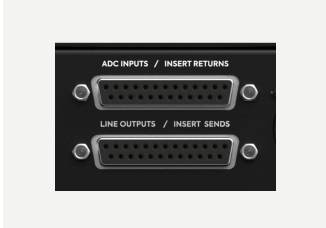
The three modes of operation offered by the Inserts on the iD48 are collectively referred to as the ADC (Analogue-to-Digital Converter) Path Settings, and the innovative Switchable Analogue Insert technology that debuted with the interface lets you switch effortlessly between them on a per-channel basis in the iD Mixer Application – no recabling required!
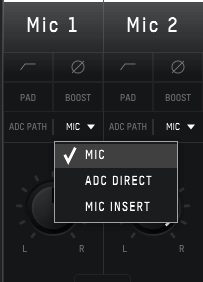
For tracking, you’ll want to select either the ’Mic Insert’ or ’ADC Direct’ mode. The first sets the routing up for the insertion of outboard processors and effects in between the mic preamp and the ADC Input, enabling live, latency-free processing of vocals (via the iD48’s preamps) and instruments for recording. ‘ADC Direct’ mode, on the other hand, has the Insert Return bypassing the preamp, for a perfectly clean path to the converter – just the thing when you’re bringing your own preamps to the party, or recording line level signals. Plug the mic into your preamp, and the preamp (chained with a compressor, EQ, etc, if required) into the Insert Return, and you’re good to go.
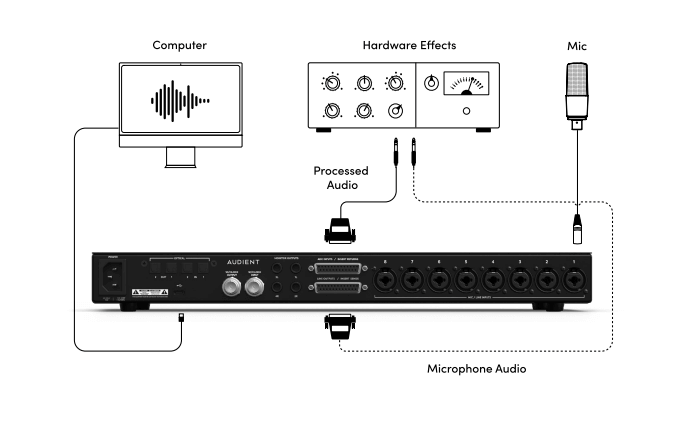
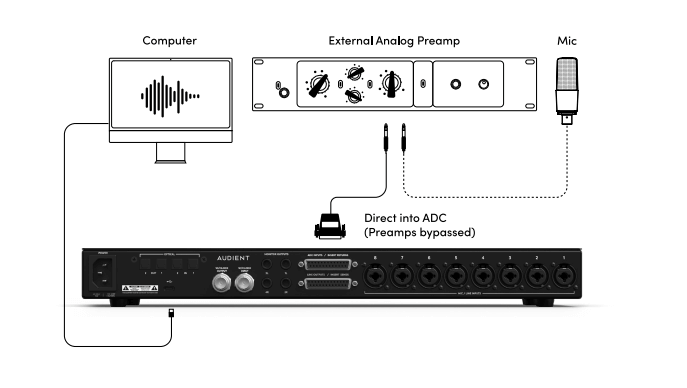
‘ADC Direct’ mode is also a powerful tool at the mixing stage, as it switches the input into the Insert Send from the mic preamp output to the output of the iD48’s DAC. This means you can now route tracks and busses in your DAW directly to the Insert Sends for outboard processing, then bring those processed signals back in on the Insert Returns – ideal for bus processing and stem mixing.
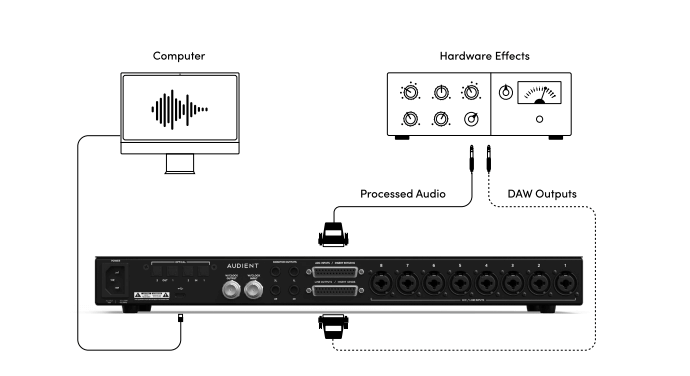
Finally, ‘Mic’ is the ADC mode of choice when you’re not using any outboard, as it sets the DB25 ports to operate as straightforward ADC (line) Inputs and Line Outputs. The mic preamps feed into the ADC, and the Line Outputs route signals out of the interface for connecting to headphone amps, secondary speakers and/or other hardware.
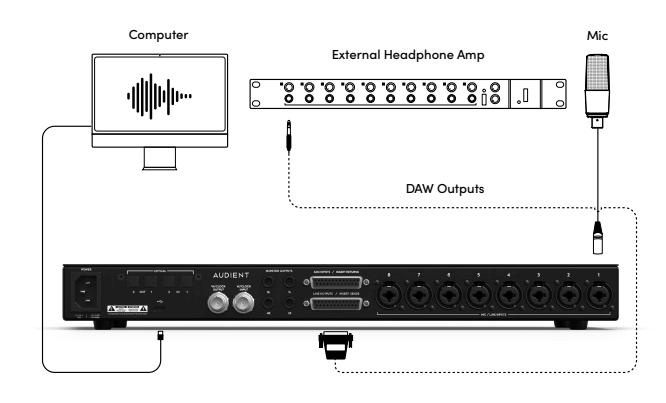
ADAT: break out from the box
As we’ve hopefully made clear, the iD44 MKII and iD48’s Insert points open up a world of possibilities when it comes to setting up outboard recording chains and mixing with hardware effects. If you’re really serious about your outboard, though, and are looking to run more external units than are catered to by the Inserts, you can get a mixing desk involved thanks to the two sets of ADAT I/O on either interface. These enable the connection of one or two eight-channel analogue I/O expansion units – such as the Audient ASP800 – using TOSLINK cables, and by hooking each input/output on the ADAT box up to a corresponding output/input on a mixer, you can record and mix up to 20 channels at once with the iD44 MKII or 24 channels at once with the iD48, each incorporating its own insert points and auxiliary effects sends, with which to rock as much outboard as you need.
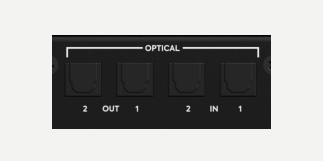
Indeed, the mixer itself makes for a compelling reason to break your signals out of the box over ADAT, even if only for summing stems – bussed drums on one stereo pair, guitars on another, vocals on another, etc. If you’ve yet to experience the hands-on workflow and satisfying response of a hardware mixer, with its immediately accessible level faders, pan pots and per-channel EQ – not to mention the warmth and colouration that only real analogue circuitry can bring – you might be pleasantly surprised by the creative, sonic and psychological benefits to be had, even if you never plug any outboard effects into it.
Outboard vs plugins, and getting the best of both
The main arguments for using outboard dynamics processors, EQs and effects over their plugin counterparts are, as touched on earlier, their tactility and sound – but latency-free performance is another major plus. If you’ve ever tried to sing or play guitar through a plugin effect, you’ll be familiar with the performance-wrecking delay that inevitably occurs, and this can be completely negated by substituting said software with its inserted outboard equivalent. It’s a no-brainer, right?
Well, yes, but one thing that needs to be borne in mind with all of this is that when you record through your outboard chain, you’re fully committing to the sound being captured, with no way to undo the processing you’ve baked into it later. While this can be a good thing in terms of preventing procrastination, plugins are completely non-destructive, so you can tweak or swap them out at any point in production. For most producers, this is an unbeatable advantage.
With all that in mind, then, why not go for a combination of both approaches? Record the outboard-processed (and monitored) signal and the dry source signal onto separate tracks at the same time to net the output of your lovingly prepared recording chain and the ‘raw’ sound. Then you can revisit the processing later, should you need to, either with plugins or by adjusting the outboard chain and bouncing it down. How you facilitate this will depend on your setup, but with guitars, for example, it’s as straightforward as connecting the DI output on your amp to a spare input on your audio interface.
Our Products
-
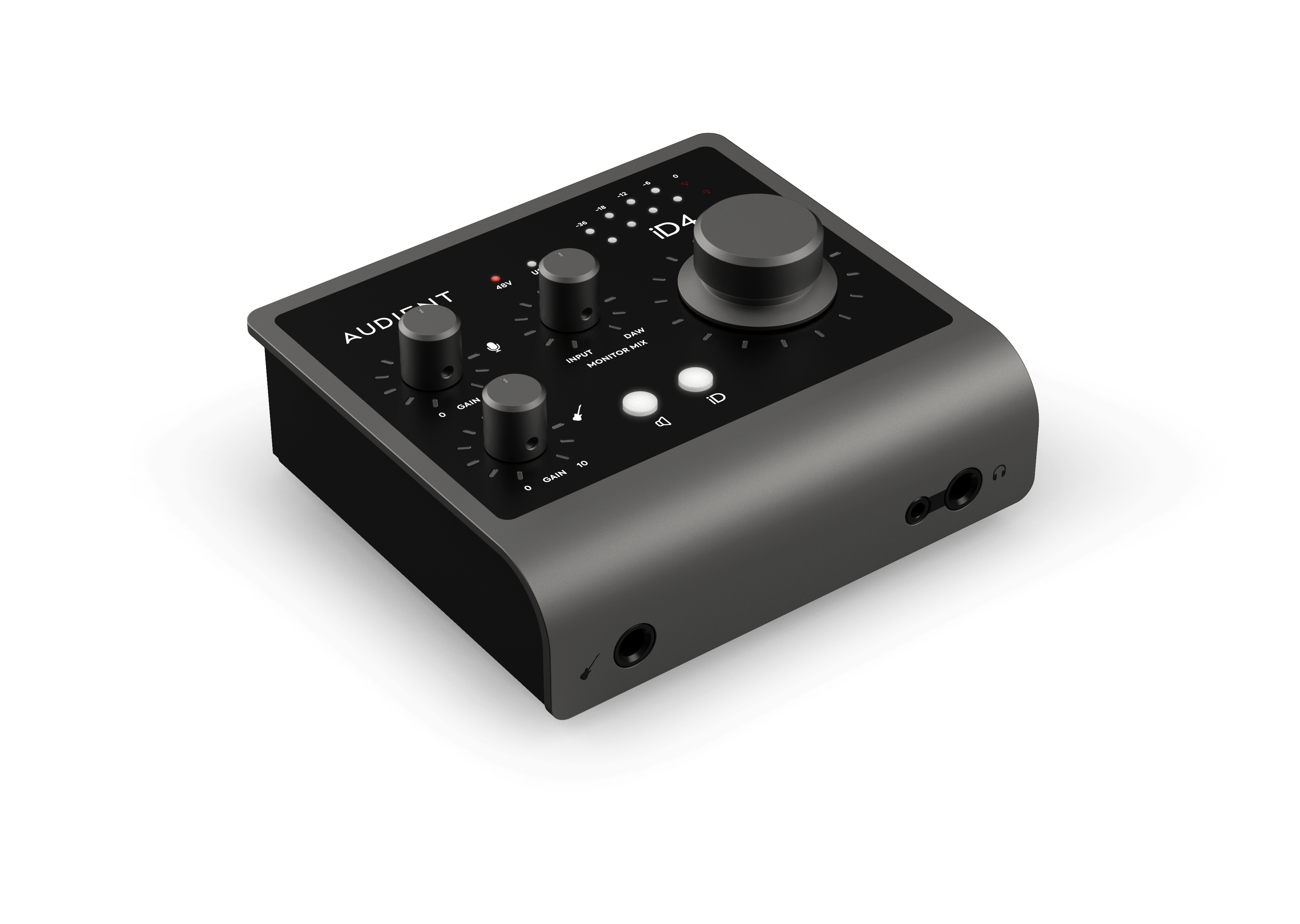
2in | 2out Audio Interface
-
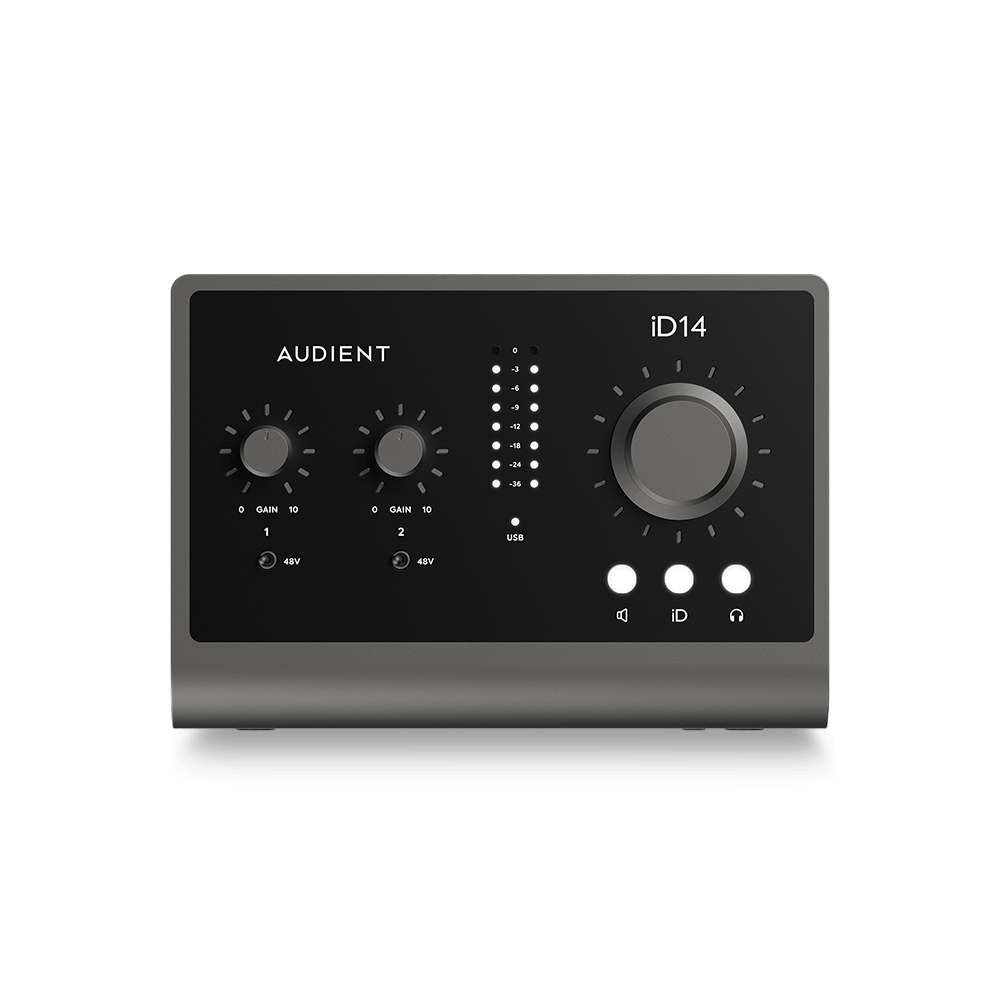
10in | 6out Audio Interface
-
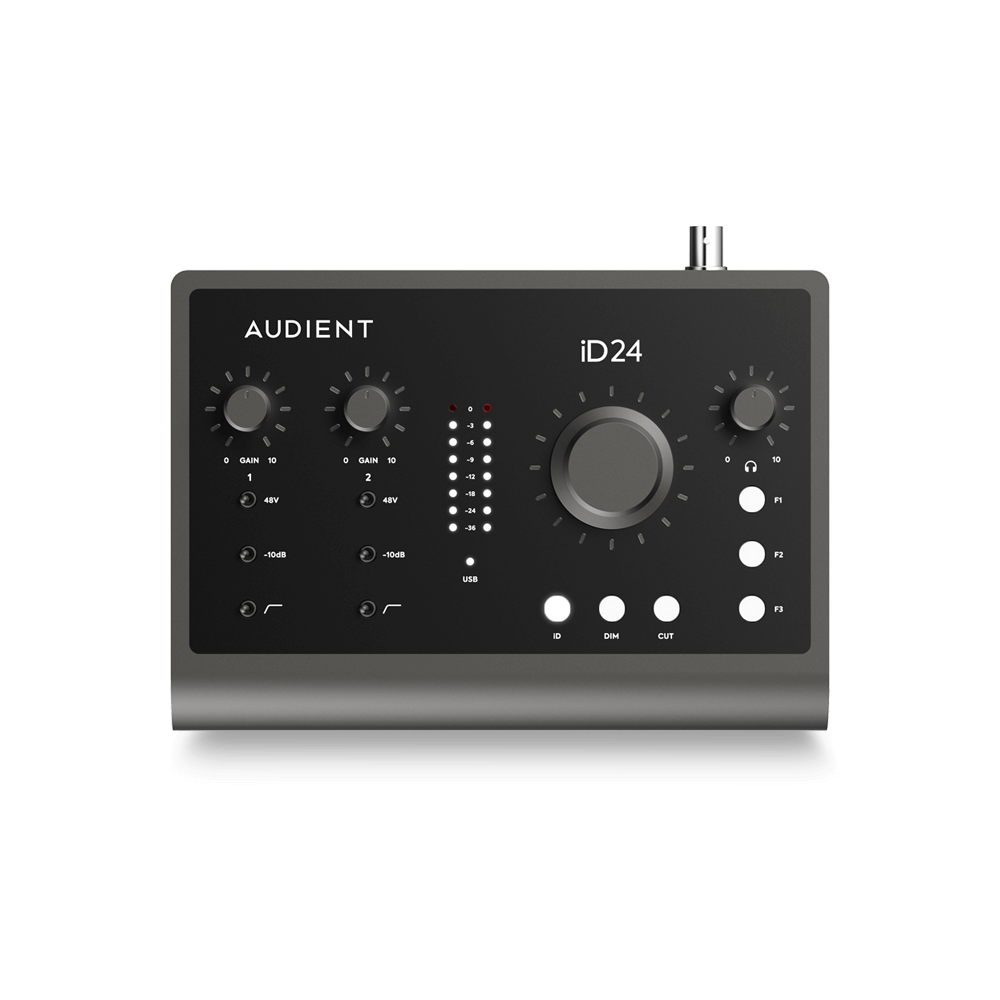
10in | 14out Audio Interface
-
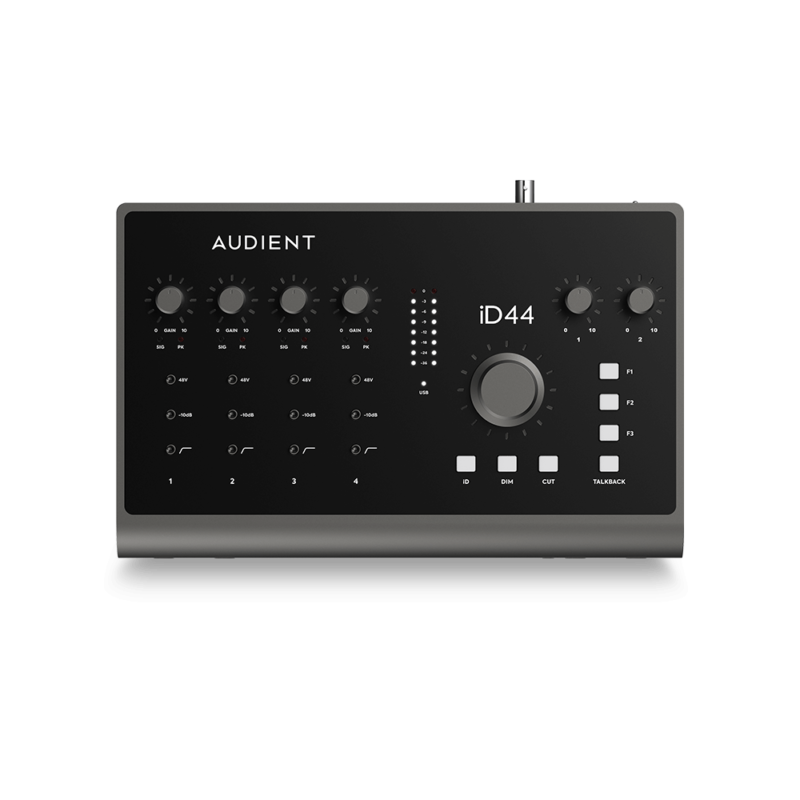
20in | 24out Audio Interface
-
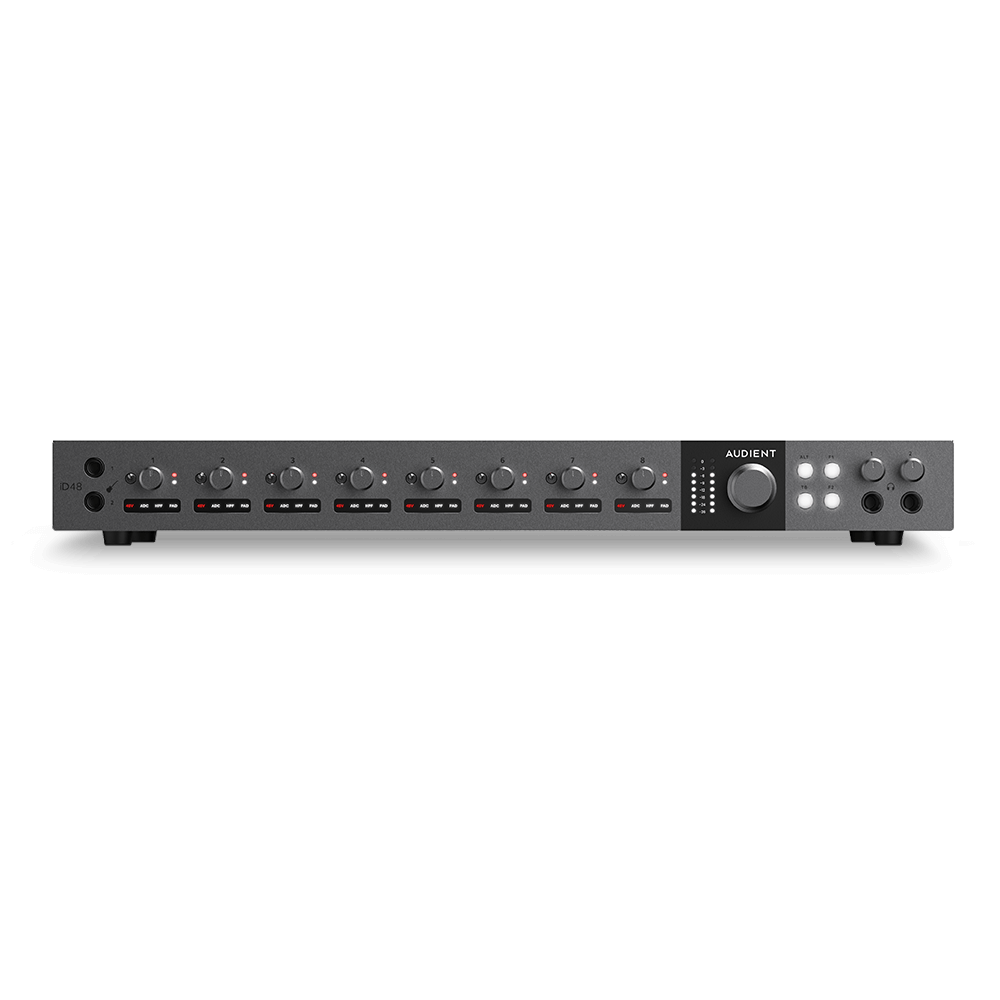
24in | 32out Audio Interface
-
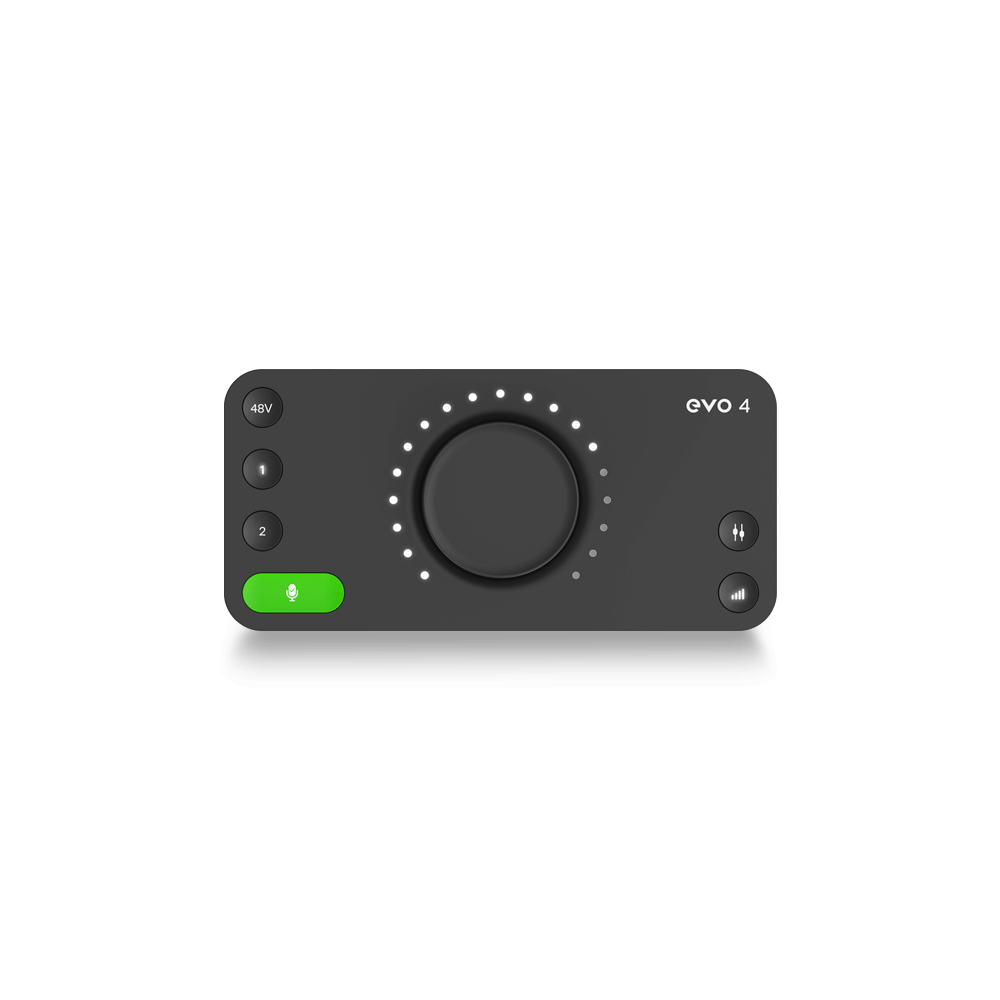
2in | 2out Audio Interface
-
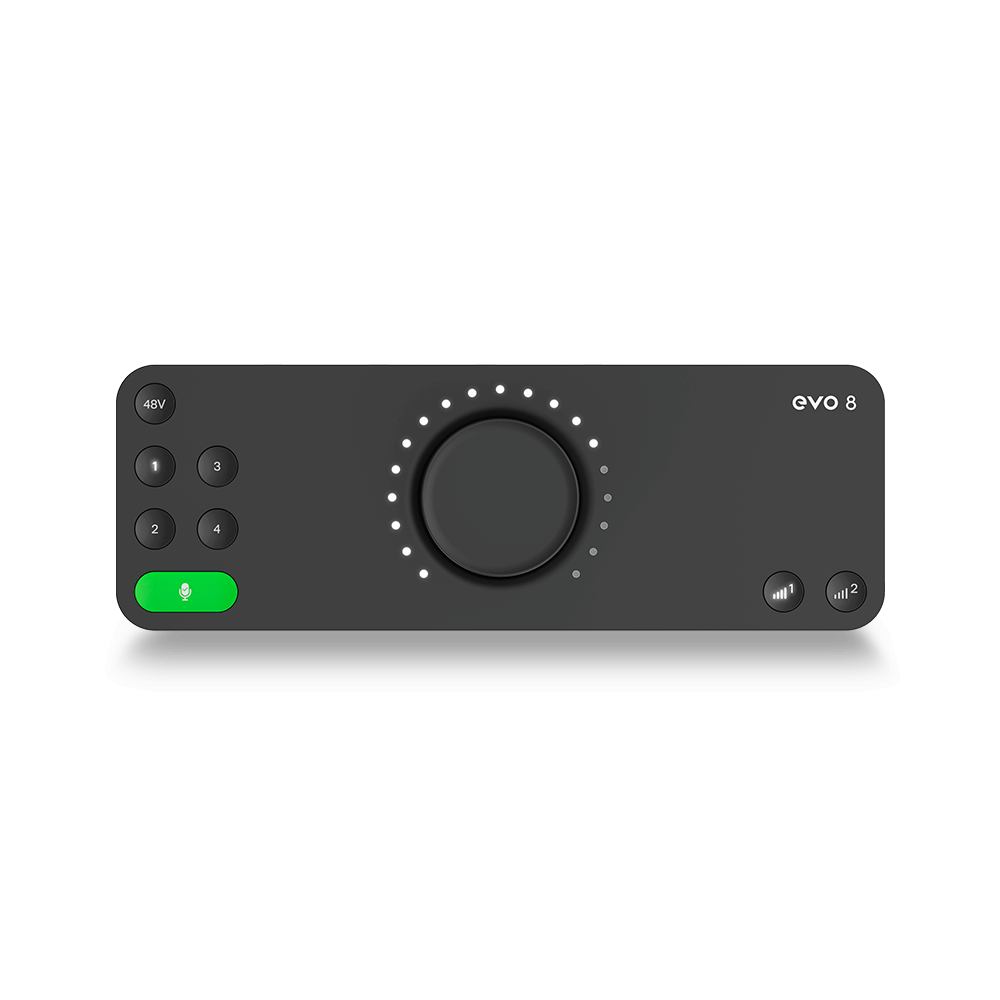
4in | 4out Audio Interface
-

24in | 24out Audio Interface
-
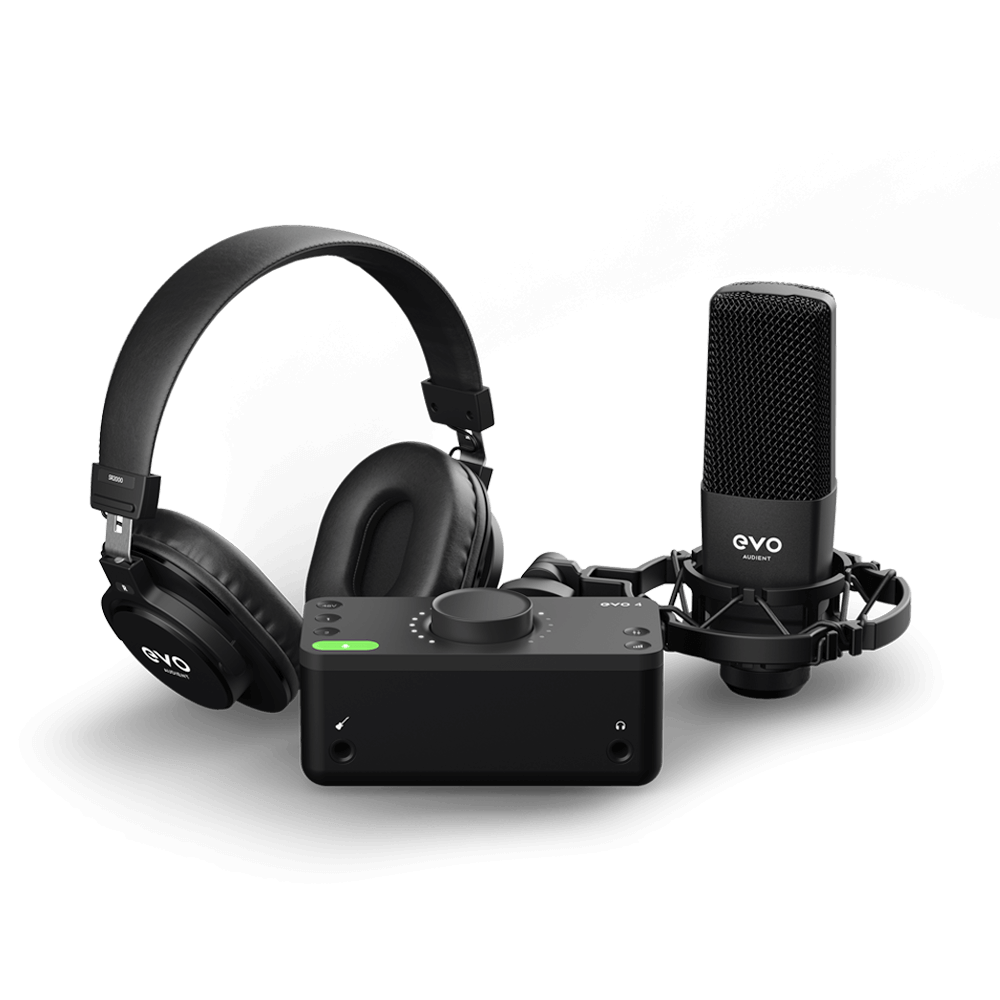
Everything you need to start recording
-
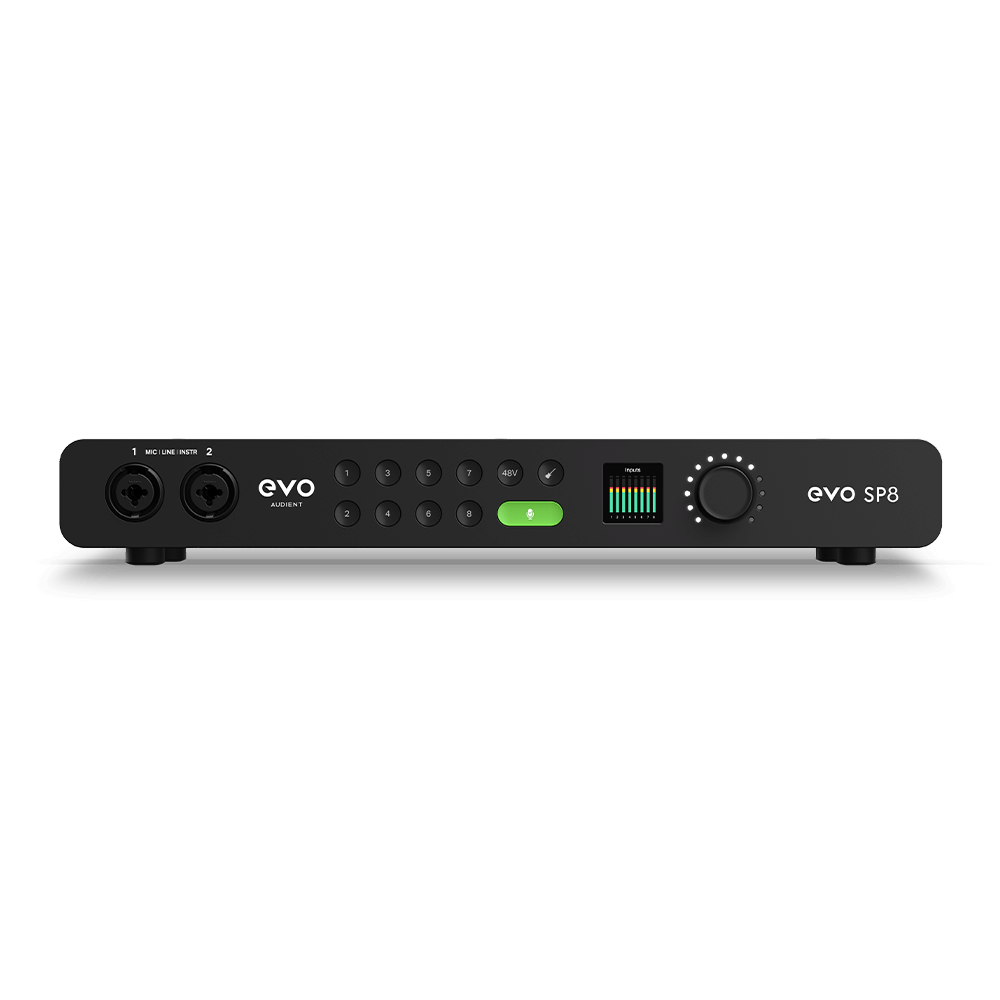
8 Channel Smart Preamp with AD/DA
-
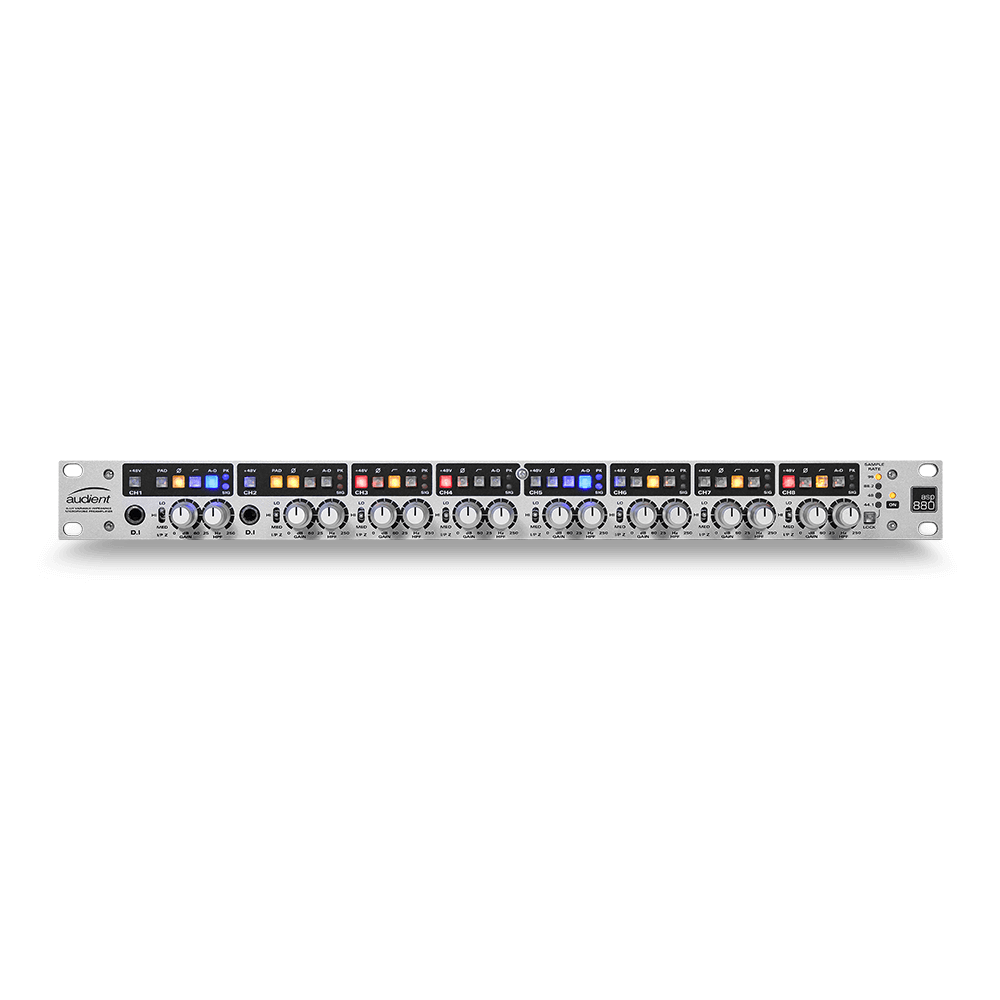
8 Channel Mic Pre & ADC
-
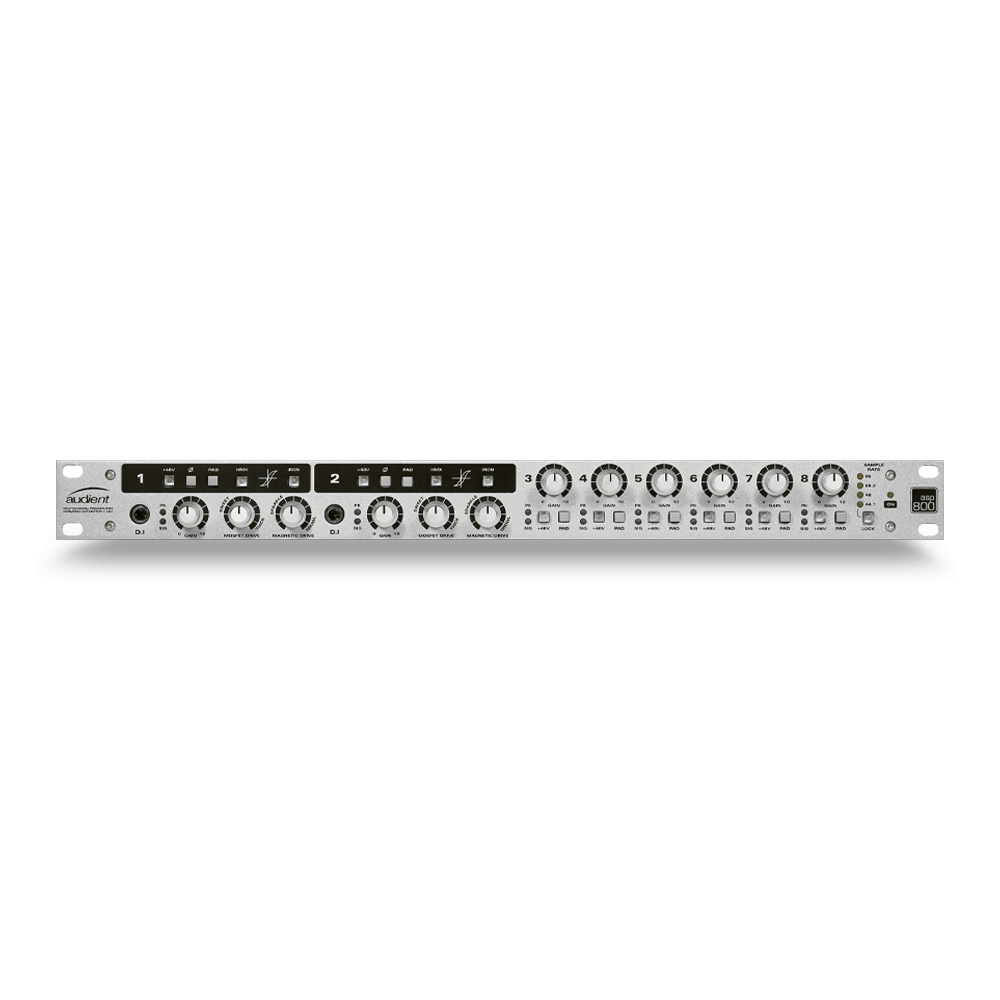
8 Channel Mic Pre + Tone Control
-
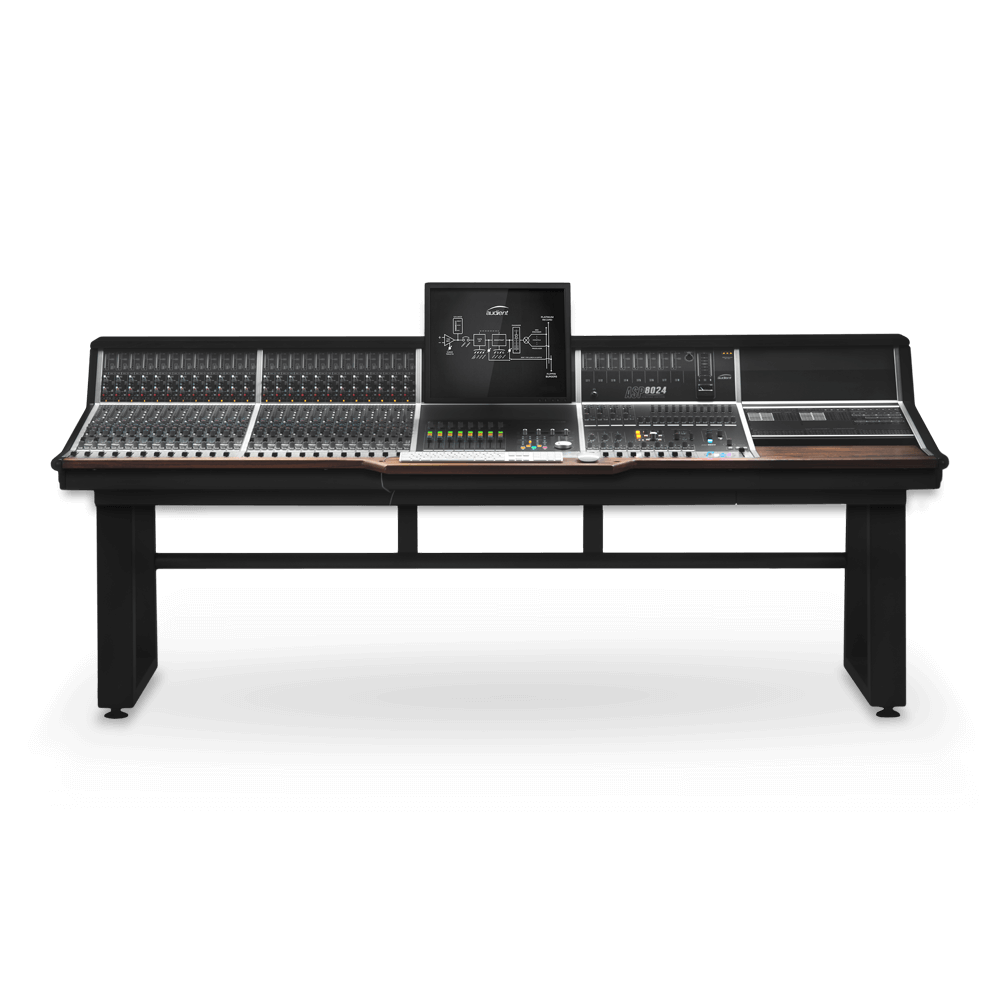
Modular Analogue Recording Console
-
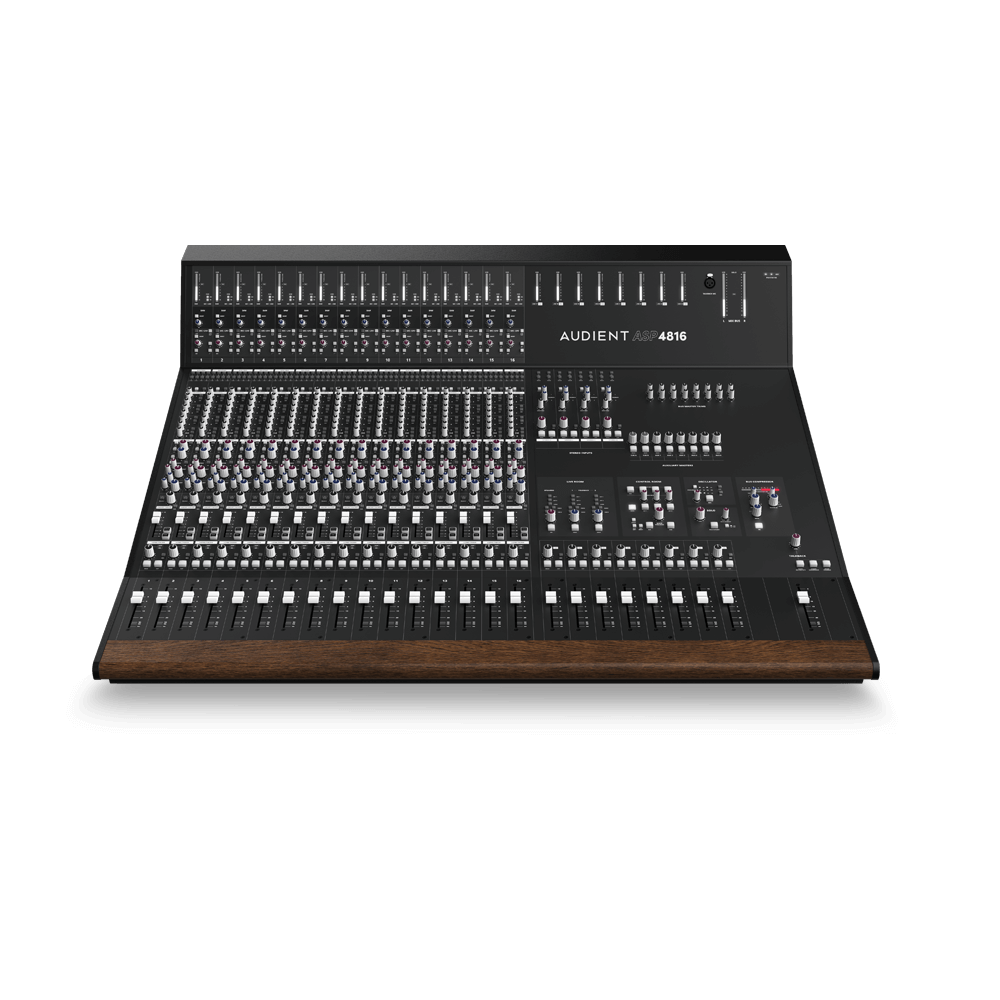
Small Format Analogue Recording Console
-
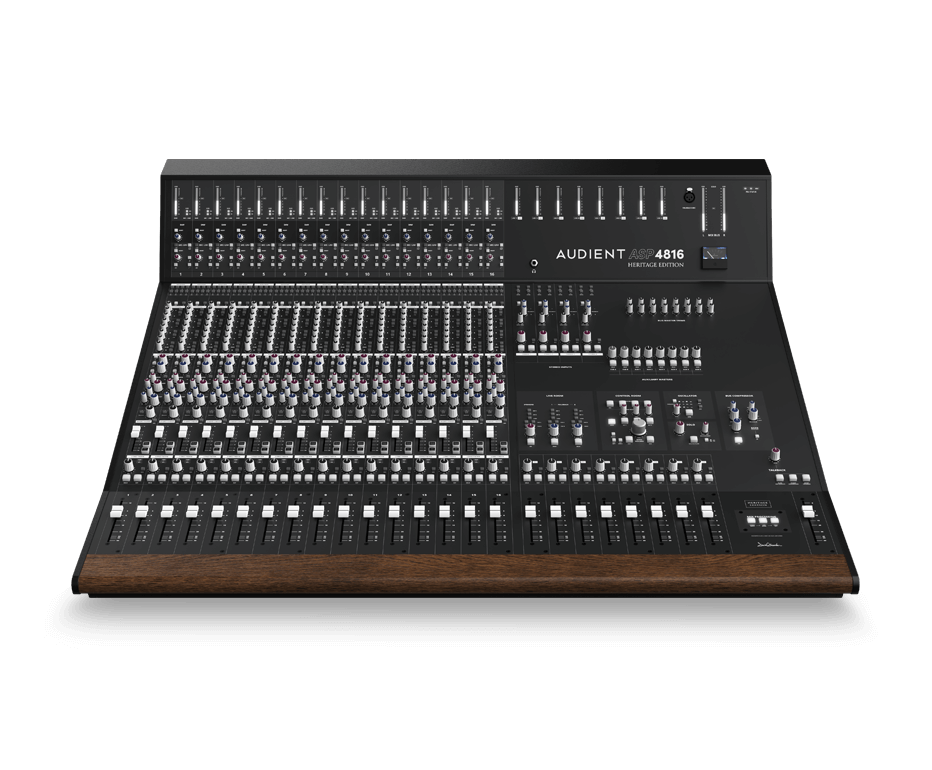
Small Format Analogue Recording Console
-
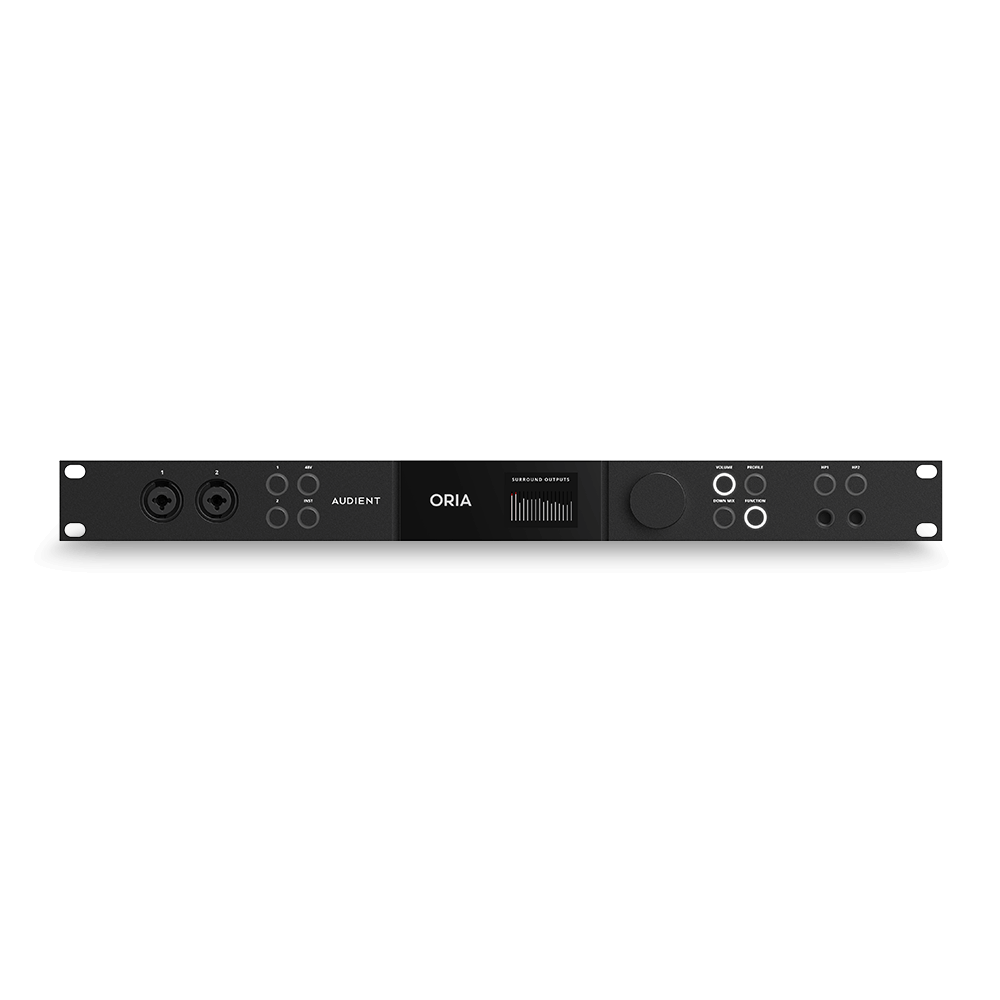
Immersive Audio Interface and Monitor Controller
-
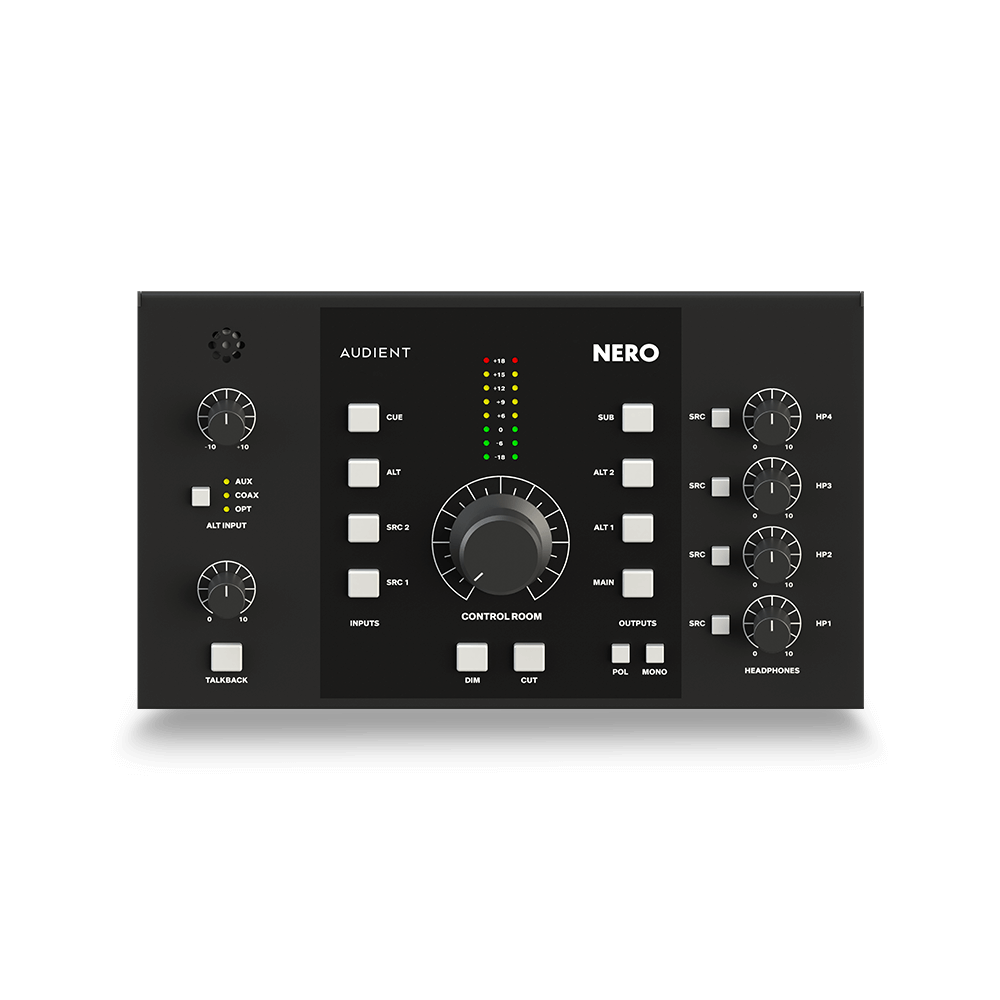
Desktop Monitor Controller
